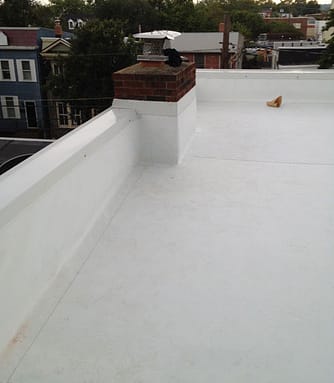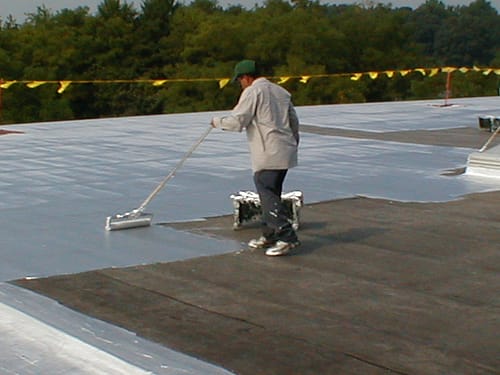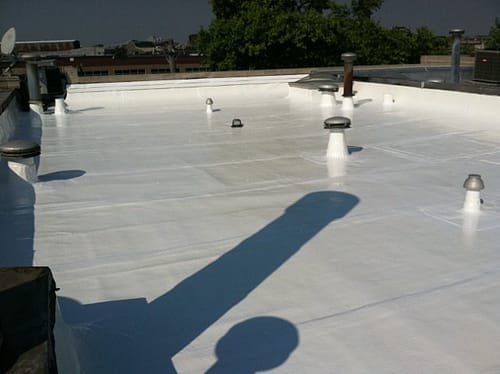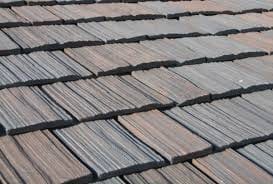Modification of bitumen is done by combining its properties with polymer additives. The introduction of a suitable polymer modifier gives the binder and the entire roofing material greater heat and frost resistance, and also it gives elasticity and increased durability.
There are two types of modified bitumen roofs:
- SBS- Modified bitumen modifier
- APP- Modified bitumen modifier
SBS- Modified bitumen roof tile:
The SBS / SBS modifier ( styrene-butadiene-styrene ) is a polymer. When SBS is added to the bitumen mass, a structural network forms that bind the components of bitumen. This structural network forms an ordered structure which has more flexibility and elasticity.
SBS-modification technology involves the use of expensive equipment in the production process that is why the soft tiles are expensive.
Due to the good adhesion of SBS roof membranes, the chance of leakage is nil. For optimum strength, less plastic is added with SBS bitumen than with APP bitumen. This makes a bituminous roof of SBS less UV-resistant. If you choose to install SBS bitumen roofing material, process it in slightly colder temperatures and cover it with slate or ballast gravel. This prevents the sun’s rays from penetrating the bitumen.
Characteristics of SBS- Modified bitumen roof tile:
- High frost resistance
- High flexibility on the timber at low temperatures
- Excellent heat resistance
- Longer lifespan
APP- Modified bitumen roof tile:
APP is atactic polypropylene. When it is mixed with the bitumen mixture, the physicochemical characteristics of bitumen change in the direction of increasing heat resistance. This type of modified bitumen is best suited for countries with a hot climate.
The roofing material takes on the properties of the plastic so that the bitumen remains flexible and can withstand extreme ambient temperatures. The technological regulations must be followed while preparing this type of modified bitumen (while mixing the APP with the bitumen mass). The APP in the bitumen ensures that the processing point is increased from 50 degrees to 140 to 150 degrees.
While processing this, at one point of high temperature the solid material becomes liquid. This reaction makes the membrane UV-resistant and ensures a longer life. The APP roofing sheets are available in various widths, colors (including white) and finishes.
Characteristics of APP- Modified bitumen roof tile:
- High heat resistance
- Excellent resistance to ultraviolet radiation
- Good flexibility
- Dimensional stability
- Good adhesion
How long does a modified bitumen roof last? And How to apply it?
Bitumen roofing is supplied in rolls, the rolls must be rolled out on the roof so that the entire roof is covered with bitumen. The excess material is cut from the bitumen roll webs. After that, the tracks are rolled back. Now a burner is needed; the bitumen roof covering is rolled out again. This time only, the underside of the bitumen is heated with a burner so that it sticks to the roof construction during the rolling process that your local commercial roof contractor uses. Using the burner requires some caution, but fire is the last thing you want when covering a roof.
Nowadays there is also self-adhesive bitumen roofing, which eliminates the risk of fire. Several companies have already reported that the adhesion of self-adhesive bitumen rolls is less than the old method with the burner. These steps make it stay longer in the roofs. Actually, most say this modified bitumen roof lasts for nearly 10 to 15 years which is the average lifespan estimation. There are some factors that can reduce the lifespan of the bitumen roof. But if it is maintained properly then it can last even longer than that.
How much does a modified bitumen roof cost?
The modified bitumen roofs can cost $1.50 to $3.00 per square foot.
Can modified bitumen roofing be repaired?
Yes, it is very easy to repair the modified bitumen roofing. Here are a few steps to repair the bitumen roof:
Steps to repair rooftop with modified bitumen coating:
Step 1: Determine how much your roof is damaged
Step 2: Clean the membrane.
Step 3: Deal with weathering part of the roof.
Step 4: Then finally patch the roof membrane.




